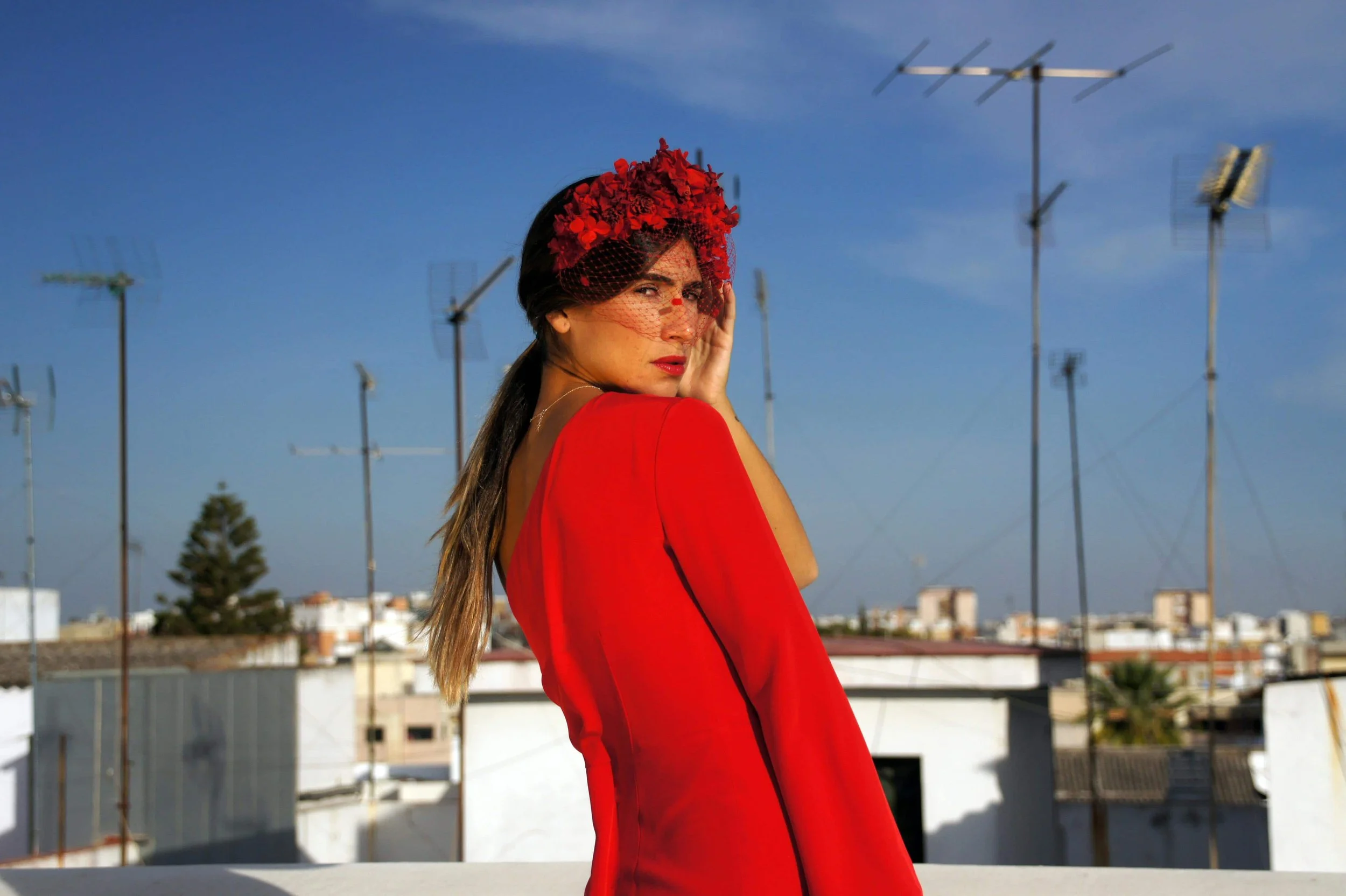Luxury Travel to Seville: Where the Night Whispers in Flamenco
In the sun-drenched south of Spain, where orange blossoms perfume the air and time folds into shadowed patios, lies Seville — the emotional soul of Andalusia. A city where longing takes the shape of music, where devotion is carried in silence and in dance, and where every stone seems to hold a secret. Seville doesn’t speak — she sings, she aches, she lingers.
Flamenco-inspired red dress posing on a rooftop in Seville, Spain. Capturing Andalusian charm and Spanish fashion culture.
Part I: Arrival Into a City That Whispers in Fire and Stone
There is something about arriving in Seville at dusk. The sun, tired and golden, dips behind the rooftops, casting long amber strokes across the old quarter. You step out of the car and into warmth — not just the air, but something older, thicker. The scent of azahar clings to the walls. A procession passes in silence, candles flickering, no words spoken. You’ve entered a place where time breathes differently.
This is not a city you visit. It is a city you inhabit. One does not rush through Seville. One listens. To the hush of the Guadalquivir, to the soft echo of footsteps in the Alcázar’s corridors, to the haunting, soul-torn voice of a cantaora singing in a patio no tourist will ever find. Luxury in Seville is not opulence — it is intimacy, ritual, depth.
Your first evening is not a checklist of attractions. It is a rooftop terrace, warm air, a glass of manzanilla served with olives and quiet. Below, the city begins to hum. Not loudly — but insistently.
Part II: When the Body Becomes an Instrument
What OBM offers here is not a tour — it is a slow, sensorial awakening. One night, you find yourself in a whitewashed courtyard lit only by lanterns. There are no cameras, no stage, no program. Just three people: a singer, a guitarist, a dancer. And silence. And then, from somewhere between flesh and fire, the music begins.
The cantaora sings not with her voice but with her life. It is not performance — it is offering. You do not clap. You do not speak. You receive.
This is flamenco as it was meant to be: raw, devotional, ancestral. You feel it in your ribs. You leave with something in your chest that wasn’t there before.
The next morning, perhaps after a late breakfast of toast with tomate y aceite and thick coffee in a shaded plaza, you are invited into another ritual. A private ceramic studio, where the hands that shape clay are the same hands that restore the tiles of the cathedral. Here, craft is reverence. You learn by watching, then by doing. Slowly. Respectfully. The way sacred things are handled.
Part III: A City That Stays With You
Seville reveals herself in layers. In the cool of stone beneath your feet in the Real Alcázar. In the scent of incense that never fully leaves the air. In the long lunches under bougainvillea, where the wine is poured slowly and time is uninvited. You stay in a former palace turned private residence, its arches and patios now yours. Each detail — the sound of the fountain, the softness of linen, the quiet knock at your door — has been chosen not to impress, but to soothe.
And still, the city keeps echoing.
The best time to come? Spring, when the city is flush with fragrance, or autumn, when the heat turns soft and the shadows return. But truly, the best time is when you’re ready to listen to yourself. Because Seville, in the end, doesn’t speak to your plans — she speaks to your longings.
When you leave, it is not the memories you carry — it’s the music still moving inside you.
If your heart is weary of noise, of spectacle, of itineraries dressed as dreams — Seville waits. And OBM will lead you not through her streets, but into her soul.

